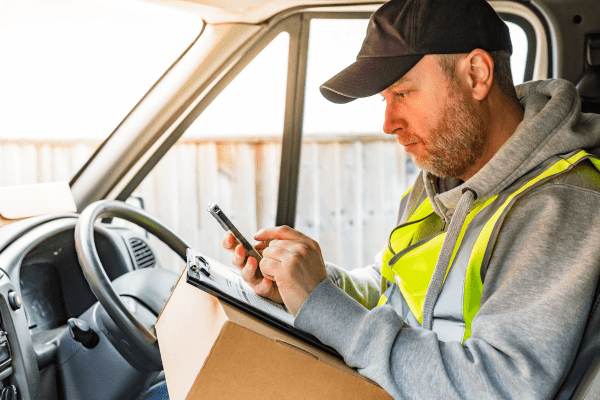Working alone in a shop (and other lone working environments)
Think back to a time when you stepped into a small shop. How many people were there? Sometimes, the one person who is working alone in a shop takes a short while to even make an appearance.
Working alone in a shop is commonplace for retailers, not only because it saves money, but also there’s rarely a need for more than one member of staff.
But, this of course presents a lone working risk, where the minder is at a heightened risk of aggression from customers, or a serious injury that goes unnoticed because there was no one around to send help.
The wholesale and retail sector ranks seventh in the list of the UK’s most dangerous jobs, thanks to slips, trips and falls. Meanwhile, someone on their own is an easier target for violence.
What are other commonplace work environments where you might find people working on their own?

Postal services and delivery drivers
Delivery drivers are under increasing pressure to fit more drops in the day thanks for the continual online shopping boom and grocery deliveries. This time pressure can lead to carelessness on the round, and when heading to someone’s front door. Eyes down confirming the drop off on their device while walking down some steps is a recipe for a nasty fall.
Both delivery and postal drivers face similar risks in making navigating to a front door: dogs. Royal Mail reported just under 2,000 attacks on their workers in the year leading up to March 2023.

Office workers
While not an intrinsically high-risk environment, it’s the little things that can make working alone in an office problematic. Things like a box left lying around, a spill on the kitchen floor, or the bottom drawer of a cabinet open.
These slip and trip hazards contribute 0.84 fatalities per 100,000 employees in the administration industry, making it, surprisingly, the fourth most dangerous job in the UK, according the HSE figures.
Home workers
And while we’re on the subject of officer workers, many others work alone at home. While in their home environment, employers still have a duty of care towards them while they’re on the clock.
Yes, conducting a risk assessment for someone working from home is a prudent step to ensure their safety, well-being, and productivity. While the risks might be different compared to a traditional workplace, they are still present. So it’s still sensible to create a risk assessment for those working alone at home.

Bar staff
Working alone in a bar carries many of the same risks as working alone in a shop. But throwing alcohol into the mix only heightens this further. So much so, that there are frequently tougher calls for sentencing from publicans.
Like a shop employee popping into a storeroom, bar staff will often face an obstacle of trip hazards throughout a shift.
Say a beer runs out. The employee has to go to the room where barrels are stored (potentially down some steps) and then watch for the clear hoses that attach to each keg.
Those who enter other people’s homes
Technicians, housing officers, social workers and carers all are at an increased risk when they go into someone else’s hope, particularly from violence and aggression.
Often, a risk assessment will highlight the need for the person entering a customer or service users’ property to look for a clear exit to remove themselves from danger if need be.
What can be done to lessen the risk of those working alone?
Working alone can heighten existing risks and bring its own set of challenges. You should factor this into a risk assessment, and make sure you’ve considered all your team members.
When looking through your risk assessment, the need for a lone working alarm might come up. These can be discreetly activated, sending details of the alert, including GPS location to operators or managers.
Take a look at our lone worker app, the PG Smart, to see how it works as part of our wider lone worker solution.

